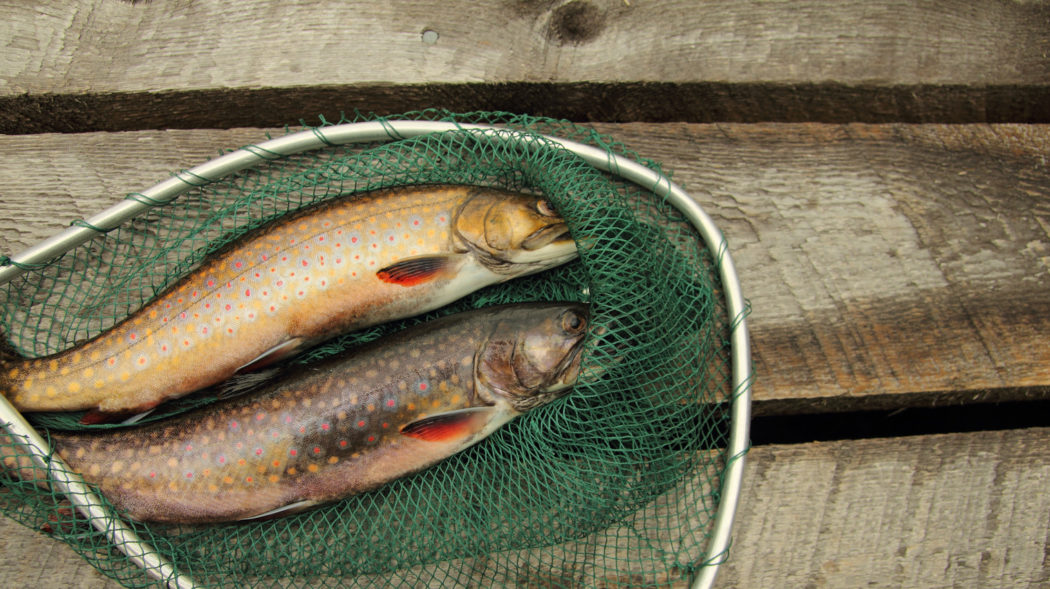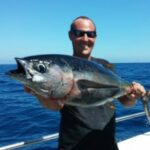Weakfish vs Speckled Trout: What’s The Difference?

Both Weakfish and Speckled Trout look very much the same and live on the same fishing grounds. This is why it can be hard to tell them apart, especially if you’re a new angler!
The Weakfish (Cynoscion Regalis) and Speckled Trout (Cynoscion Nebulosus) also belong to the same Cynoscion (drum) family. But, while they belong to the same family, the Weakfish (also called Gray Trout) and Speckled Trout (or Spotted Seatrout) are two different fish species.
So, what’s the difference between Weakfish and Speckled Trout? The best way to tell them apart is the spots. Weakfish have flecked spots that often form lines on the body but never enter the fins. Speckled Trout, on the other hand, have defined and irregular black spots on their backs. These spots usually extend to the dorsal and caudal fins as well, but will never extend to the fins.
This is the simplest way to differentiate the two. However, the spots are not the only thing different between these species. There are still a lot of things that separate Gray Trout from Speckled Trout. I will try to clarify this confusion and add more information that you may find useful on your next fishing trip.
Weakfish vs Speckled Trout: The Main Differences
Before explaining what sets these two species apart, it’s important to first know what makes them very similar.
Firstly, they look incredibly the same. They both have a long body, usually have the same color, the same lateral line, same dorsal fin shape, and are usually the same size. And just like Carp, they are also good to eat.
Both fish average 2-6 pounds and can reach up to 18 lbs!
The average fish also have the same prominent canine teeth. However, spotted seatrout are also known as gator trout in some areas. This is because once they reach 25 inches or more, their tooth-filled mouths start to look like the toothy, enormous reptile.
Secondly, they both have very tender mouth muscles. Their jaws are very fragile too, and they often rip apart once hooked up. This, in fact, is how the Weakfish got their name.
Now that you know what makes these fish similar, it’s time to explore their differences:
Spots
As mentioned, both fish have black spots along their dorsal fin. These marks are the main things you should look for when identifying these two species.
However, weakfish or grey trout don’t have well-defined spots. They’re more flecked than spotted and the spots usually form lines on the body. Plus, these spots don’t enter the fins. Weakfish have yellow fins, free from any spots.
Meanwhile, Speckled Trout have a defined, irregular spot pattern on their back. They look very much like the Brown Trout, hence where the name “trout” came from.
And, unlike Weakfish, Speckled Trout have spots on their dorsal and caudal fins.
Color and Body Type
Grey trout have dark, green backs with silver bellies and have sides that can be green, purple, or blue. Speckled Trout have a silver body than can have a golden hue once they live in murky water.
Also, although they have the same body length, Weakfish are stockier and carry more weight. If you put them side by side, you’ll quickly notice that Speckled Trouts have a more elongated, elegant body shape!
Fishing Grounds
Weakfish and Spotted Seatrout live on the same fishing grounds on the South Atlantic Coast. You can find Weakfish more toward the North (from North Florida to Nova Scotia) while there’s an abundance of Speckled Trout in the South (from Delaware Bay to Texas.)
Weakfish are considered migratory species so fishing grounds change during the year. You can fish anywhere from Delaware to New York during the summer. Meanwhile, anywhere from North Carolina to Florida is popular for winter fishing.
Speckled Trouts, on the other hand, are not migratory. You can fish for them the whole year in the Gulf of Mexico and anywhere between Florida and the Chesapeake Bay.
On top of that, there’s a high chance of an abundance of both species if you fish anywhere from North Florida to Delaware. This includes Georgia, North and South Carolina, and Virginia!
Habitat
Weakfish grow in estuaries and shallow flats covered with seagrass since this type of terrain has huge numbers of baitfish. They’re especially fond of brackish waters during their spawning season (with Chesapeake Bay being the most important spawning ground.)
Then, as winter arrives, Weakfish will migrate to the offshore habitats, mainly off North Carolina.
Speckled Trout also love hanging around shallow bays and estuaries, preferably sandy bottoms covered with oysters or seagrass. They often lurk around shallower waters during warmer months. But, as the water becomes colder, they swim to deeper water.
This mostly includes deep bays, especially the Gulf of Mexico.
Average and Maximum Size Range
The average Weakfish can range from 12-18 inches long and can weigh anywhere from 2-4 lbs. They can, however, grow up to 3 feet long and 18 lbs.
On average, Spotted Seatrout can grow a maximum of 19 inches for mature males while 25 inches for females and weigh from 1-3 lbs.
The biggest Spotted Seatrout was reportedly caught in Lower Laguna Madre on May 23, 2002. It weighed 16 pounds and was a monstrous 37 inches long!
Population
In terms of population, both trout species are at a disadvantage
For instance, Weakfish have been decreasing since the 1980s. Despite continuous conservation efforts, their population isn’t growing at all!
Natural mortality contributed to 97% of the overall mortality over the course of the study above. But, more recent studies show that natural and fishing mortalities contributed equally to overall mortality.
The same goes for Spotted Sea Trout. Females can produce 3-20 million eggs per year and spotted seatrout are targeted by both commercial and recreational fishermen throughout their range.
Bag Limits
In general, Weakfish have a 1 bag limit with a minimum size of 13-16 inches.
Spotted seatrout, on the other hand, are the most targeted species on the whole South Atlantic Coast. In fact, the total harvest for recreational fishing is more than seven times the amount of commercial harvest per year!
This is why current bag limits allow anglers to catch up to five fish a day within 15-25 inches. Also, only one of the five fish is allowed to be more than 25 inches or more.
How to Fish Weakfish and Speckled Trout
Weakfish and Speckled Trout are very popular among anglers and fishermen because they take on both natural and artificial baits (they even like hotdogs like other fish). You can try one of these two simple yet effective tricks:
- Live shrimp is one of the best bait for trout. When using a live shrimp, attach it to a cork rig to catch a Spotted Seatrout.
- Drift a shredder crab or bloodworm with a basic Cape May Float Rig when aiming for Weakfish. Weakfish are suckers for these baits, especially in the spring as the water becomes warmer.
Tip: When fishing, never use too much force to avoid tearing the fish’s mouth. At the same time, you’ll also want to keep the line tight so the fish can’t shake off the hook. Since most of the fish range from 2-4 lbs., a light to medium tackle is your best bet.
In Conclusion
Now that you know the difference between these two kinds of trouts, it’s time to put your fishing skills to the test. Just remember that they’re both aggressive eaters, so I suggest going with experienced fishermen if it’s your first time.
As an Amazon Associate, Fishermen's Angle earns from qualifying purchases. We get commissions for purchases made through links in this post.


